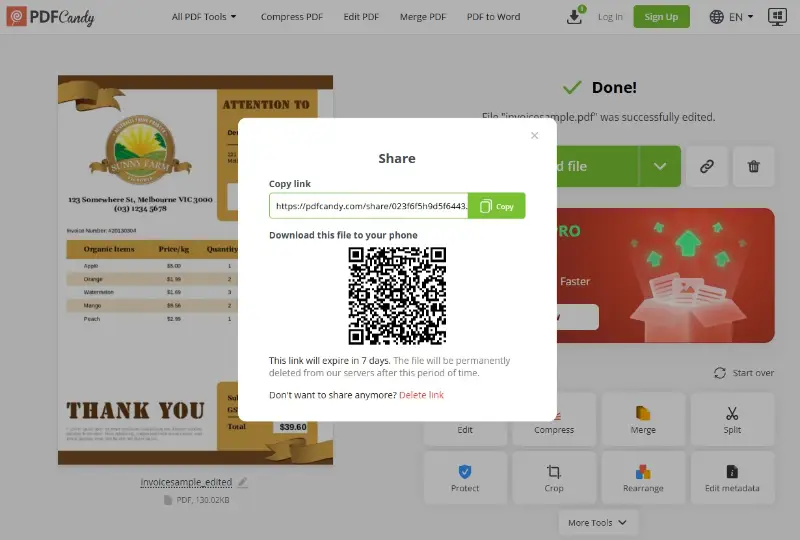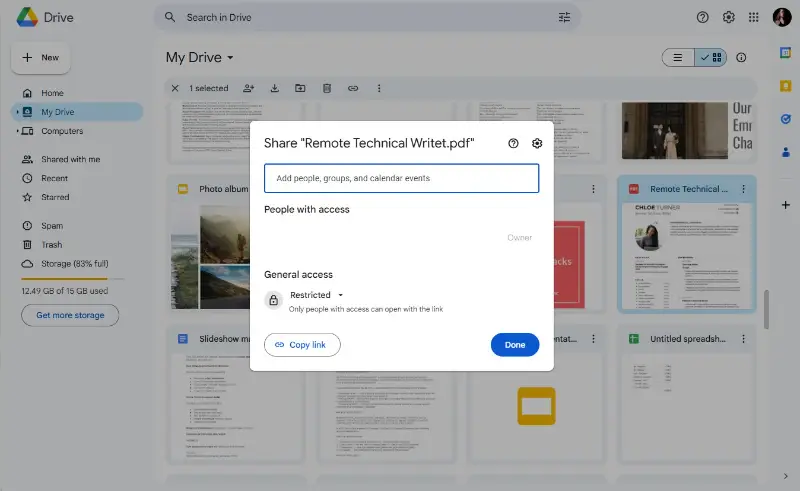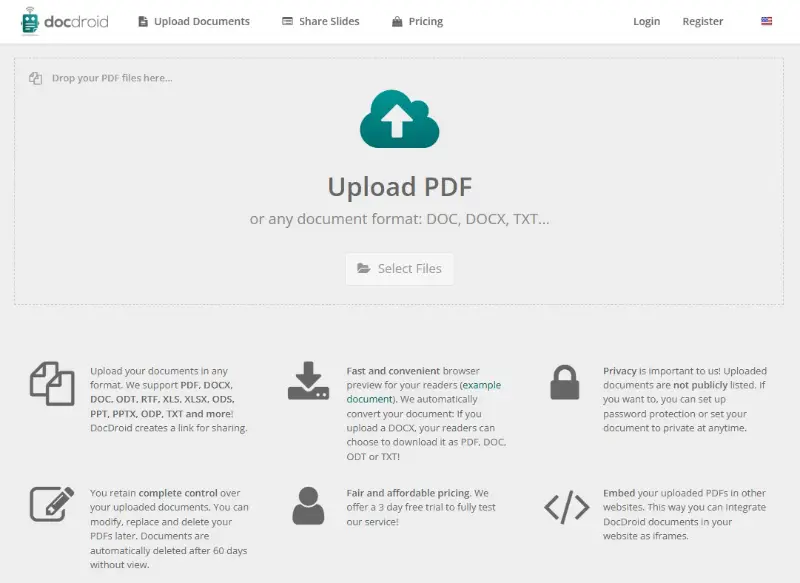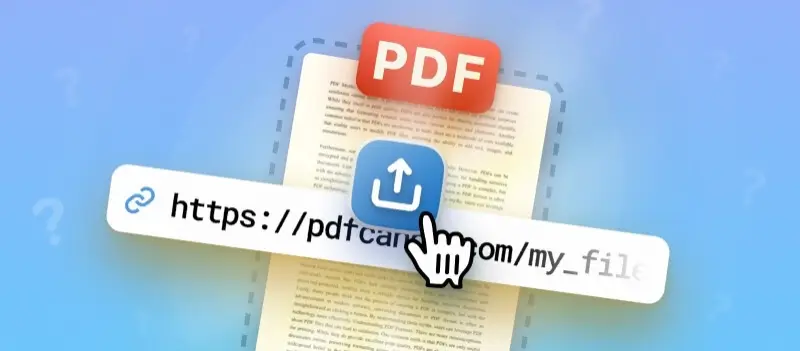How to share a PDF as a link is a common question for anyone who needs to send documents efficiently without worrying about size limits.
Instead of compressing heavy files to emails or messages, converting your PDF into a link allows easy access for recipients on any device.
In this guide, you will learn several practical ways to turn a PDF into a shareable link via cloud storage, online platforms, and collaboration tools.
Why share a PDF as a link?
| Benefit | Explanation | Example Use Case |
|---|---|---|
| Bypasses Attachment Limits | Many email services restrict sizes (e.g., 25 MB in Gmail). Employing a link eliminates this problem. | Sending a high-resolution 50 MB catalog to several partners without compressing it. |
| Accessible Across Devices | A shared link can be opened on phones, tablets, or computers without requiring extra software. | Distributing a digital brochure to clients with various gadgets. |
| Streamlines Teamwork | URLs enable multiple people to view or collaborate on the same PDF simultaneously, depending on access settings. | Colleagues editing a project proposal stored in OneDrive. |
| Ensures Up-to-Date Content | When the file is revised in cloud storage, the link stays valid, showing recipients the most current version. | Updating an employee handbook without resending new documents. |
| Offers Stronger Protection | Platforms provide options like restricted access, passwords, and expiring URLs to safeguard documents. | Sharing sensitive agreements with time-limited viewing rights. |
Option 1: Online Platform
PDF Candy is a web-based tool designed for modifying and distributing documents. It’s particularly useful if you need to adjust, merge, compress, or convert files before generating a URL for recipients.
How to make a PDF into a link with PDF Candy:
- Open the free online PDF editor.
- Upload the document.
- Apply any desired edits.
- Export the updated version.
- Copy the generated link and distribute it.

Pros:
- Fast and straightforward editing without installation.
- User-friendly interface for multiple tasks.
Cons:
- Links have limited availability (7 days).
Option 2: Cloud Storage Services
Platforms like Google Drive, Dropbox, and OneDrive allow you to upload and store files securely while sharing them via controlled links. They are ideal for long-term accessibility and managing permissions.
How to get a link to a PDF with a cloud storage:
- Sign in to your account.
- Add the document by hitting “New” (or equivalent) and selecting it from your device.
- Once uploaded, right-click the file and choose “Get link” or “Share”.
- Adjust the link settings to define whether recipients can view, comment, or edit.
- Copy the generated URL and distribute it to the intended audience.

Pros:
- Secure storage with adjustable permissions and protection.
- Integrates well with other productivity tools.
Cons:
- Requires an account to manage uploads.
- Free plans offer limited storage space.
Option 3: Online Hosting Tools (e.g., )
Utilities like DocDroid specialize in adding documents quickly and sharing them through direct links. They work best for fast distribution without complex configuration.
How to share a PDF as a link using DocDroid:
- Visit a service website.
- Click the designated area, select your PDF, and confirm the upload.
- Allow the platform to process the file, after which it generates a unique URL.
- Review sharing settings to ensure privacy is maintained.
- Copy and send the result to anyone who needs access.

Pros:
- No registration needed for basic usage.
- Immediate link creation after upload.
Cons:
- File size and storage time may be limited.
- Fewer privacy and collaboration controls.
Option 4: Collaboration Platforms
Slack and Microsoft Teams enable groups to share PDFs directly within their communication environment. They combine transfer with discussions, making teamwork smoother.
How to create a link to a PDF with collaboration websites:
- Open the workspace where you want to share the paper.
- Drag the file into the chat window or use the attachment icon to upload it.
- The service processes it and generates an internal link with a preview.
- Members can open, download, or comment on the document within the same thread.
- Pin or save the URL for quick access in the future.

Pros:
- Excellent for documents within a private workspace.
- Supports comments and feedback alongside files.
Cons:
- Links are only accessible to workspace members.
- Not intended for public sharing.
Tips for secure PDF sharing
- Protect your PDF link with a strong password to control access.
- Assign view-only rights to prevent modifications or downloads.
- Share URLs exclusively with intended recipients instead of making them open to everyone.
- Use links that expire automatically after a specific duration.
- Activate two-step verification on your cloud accounts to boost protection.
- Periodically check and adjust settings to revoke unnecessary permissions.
- Refrain from transmitting confidential content over unsecured or public internet connections.
- Opt for services that encrypt files both during upload and storage.
- Add watermarks to documents to deter unauthorized copying or redistribution.
- Restrict the number of times a link can be accessed if the platform permits.
- Advise recipients against forwarding without prior approval to maintain control.
- Generate distinct URLs for separate groups to track who sees the material.
- Review active links regularly and deactivate any that are obsolete.
- Exclude sensitive information from the PDF itself by using summaries or split files.
- Employ digital certificates or signatures to confirm the legitimacy and integrity.
Conclusion
Sharing a PDF as a link is a simple and convenient way to distribute files without the hassle of attachments.
Whether you choose cloud storage, an online PDF converter, or built-in features in messaging apps, the process ensures that your document is accessible anytime and from anywhere.
By following the methods outlined in this article, you can streamline sharing and make collaboration easier.




